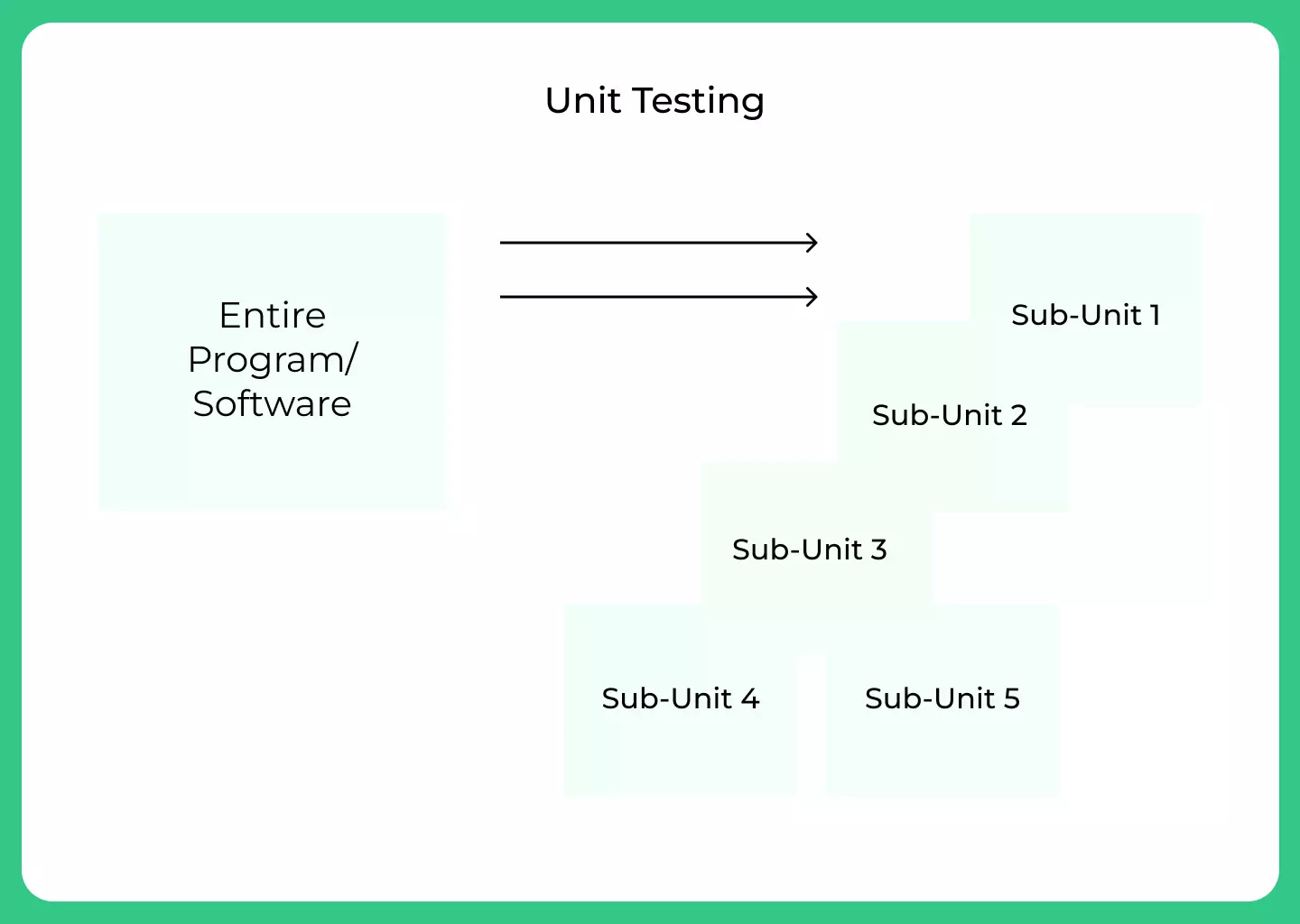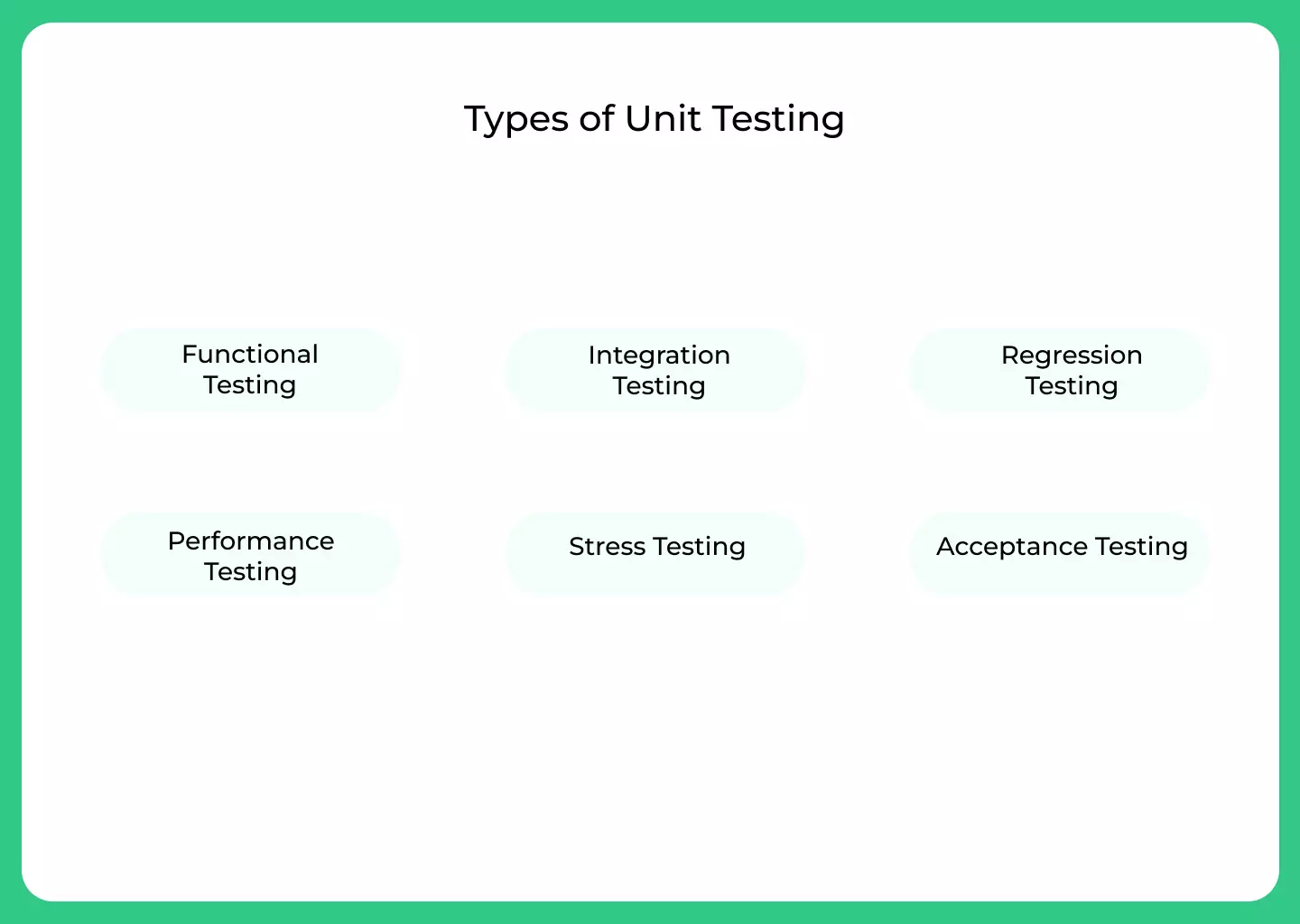0
Notifications Mark All Read
- Login
- Get Prime
Unit Testing in Software Engineering
What is Unit Testing in Software Engineering?
Unit testing is a software testing method where individual units or components of a software application are tested in isolation from the rest of the application. The goal of unit testing is to validate that each unit of the software application is working as intended.
Unit tests are typically automated and are run every time the code is changed to ensure that the changes haven’t introduced any new bugs. Unit testing is typically done by developers as part of the development process, rather than by separate quality assurance teams.

Objectives of Unit Testing

The main objectives of unit testing are to:
- Verify that the individual units of code (e.g. functions, methods, classes) work as intended
- Ensure that changes to the code do not break existing functionality
- Facilitate debugging by making it easier to identify the source of errors
- Improve code quality by encouraging the development of modular, testable code
- Provide a way to automatically test code changes to reduce the need for manual testing.
Workflow of Unit Testing
The workflow of unit testing typically involves the following steps:
Write test cases:
Write test cases that cover different scenarios and test the functionality of individual units of code.
Run tests:
Run the test cases against the code to check if the code behaves as expected.
Analyze results:
Analyze the results of the tests to check if any tests failed.
Debug and fix:
If any tests fail, debug the code to identify and fix the problem.
Repeat:
Repeat the process of running tests and analyzing results until all tests pass.
Refactor:
Once all tests are passing, you can refactor the code to improve its structure or maintainability.
Repeat:
Repeat the entire process of writing test cases, running tests, analysing results, debugging and refactoring as needed.
Types of Unit Testing

There are several types of unit testing in software testing, including:
Functional testing:
This type of testing focuses on the functionality of the code and ensures that it meets the specified requirements.
Integration testing:
This type of testing is used to test the interactions between different units or components of the code.
Regression testing:
This type of testing is used to ensure that changes to the code do not introduce new bugs or break existing functionality.
Performance testing:
This type of testing is used to measure the performance of the code and ensure that it meets the required performance standards.
Stress testing:
This type of testing is used to test the code under extreme conditions, such as high loads or limited resources, to ensure that it can handle such conditions.
Acceptance testing:
This type of testing is used to determine whether the code meets the acceptance criteria and is ready for release.
Advantages of Unit Testing

Disadvantages of Unit Testing
Prime Course Trailer
Related Banners
Get PrepInsta Prime & get Access to all 200+ courses offered by PrepInsta in One Subscription
Prime Course Trailer
Related Banners
Get PrepInsta Prime & get Access to all 200+ courses offered by PrepInsta in One Subscription
Get over 200+ course One Subscription
Courses like AI/ML, Cloud Computing, Ethical Hacking, C, C++, Java, Python, DSA (All Languages), Competitive Coding (All Languages), TCS, Infosys, Wipro, Amazon, DBMS, SQL and others

 0
0

Login/Signup to comment